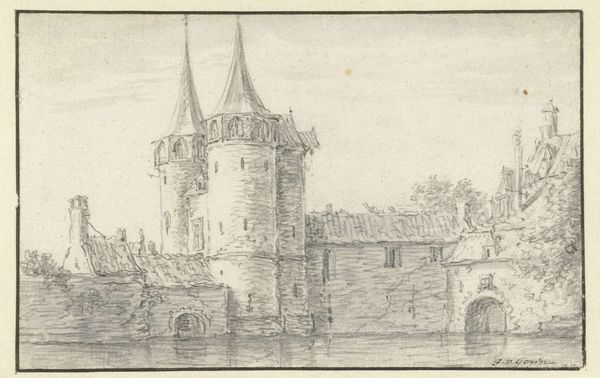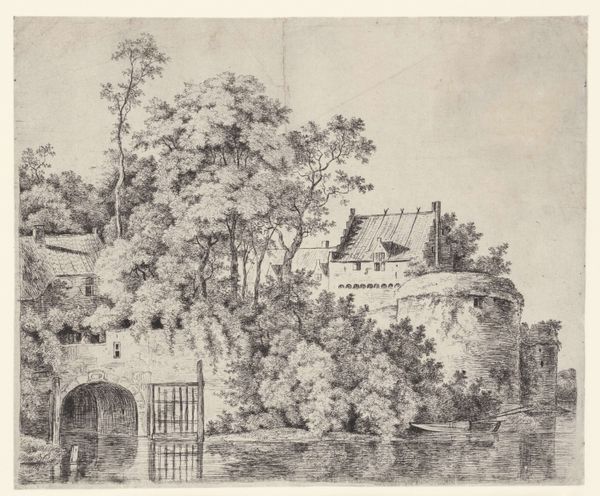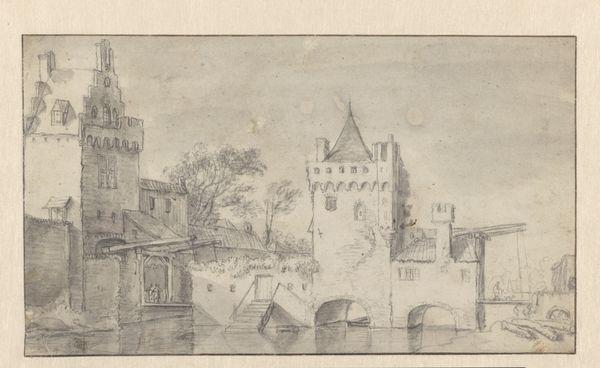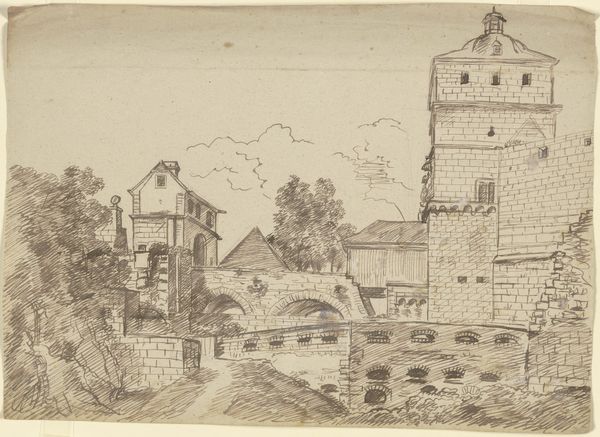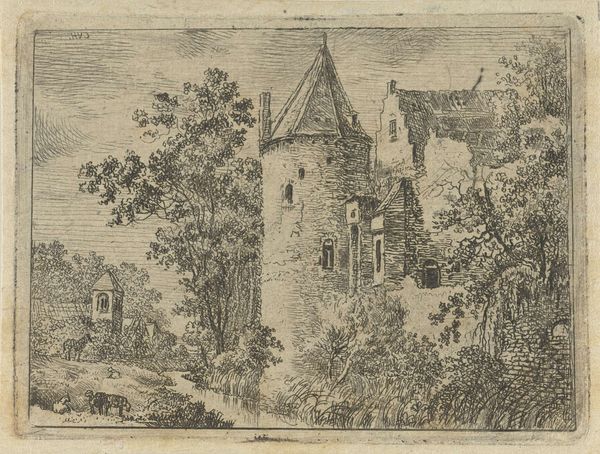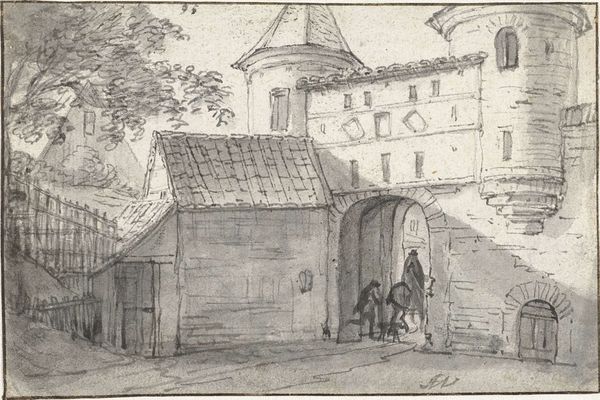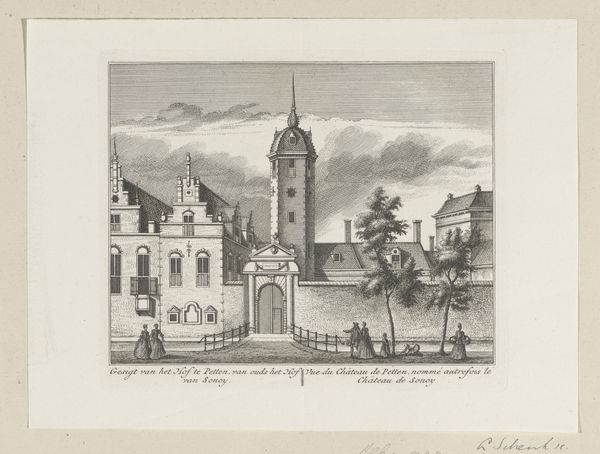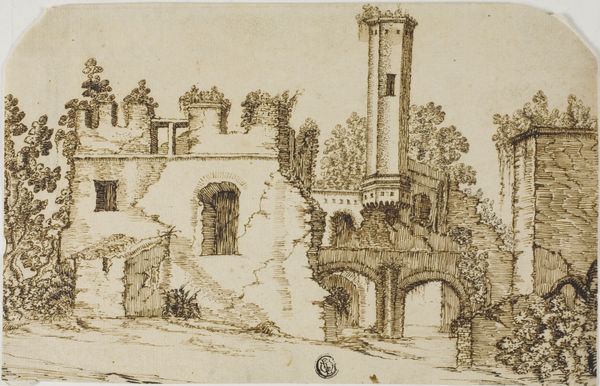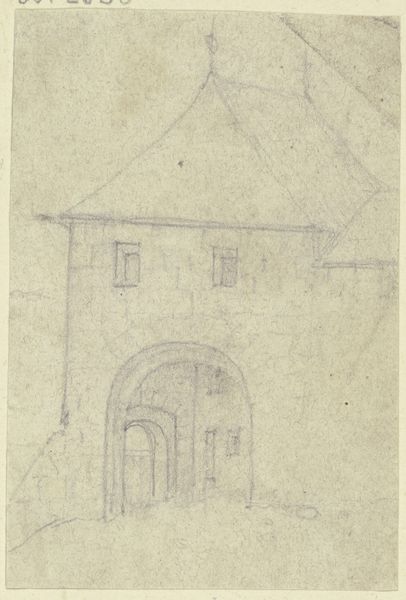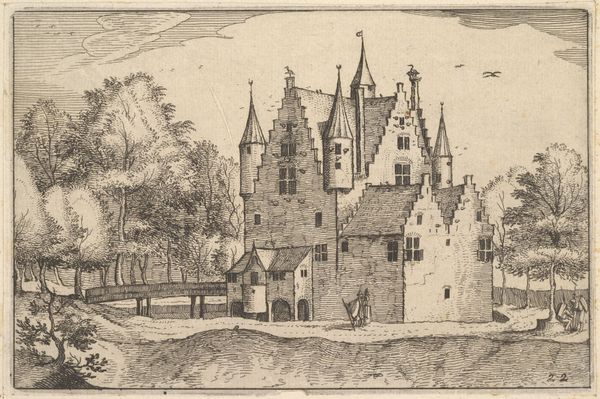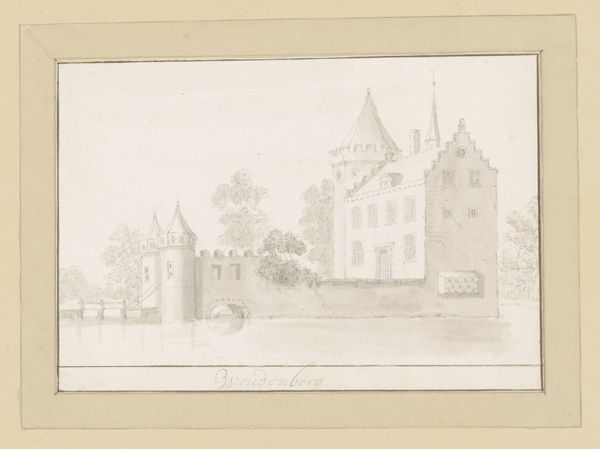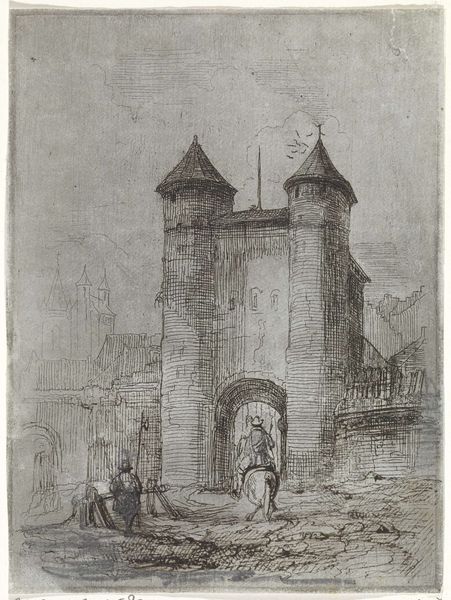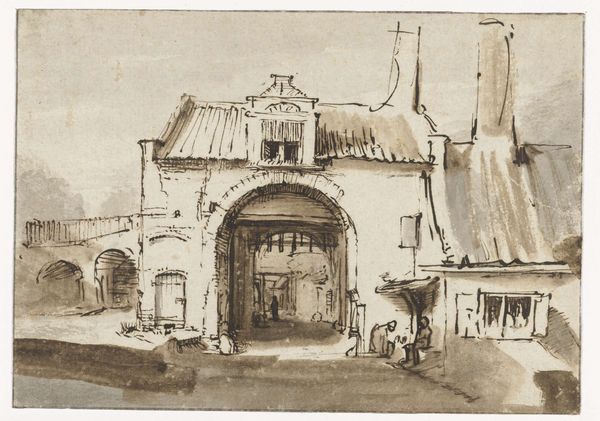
Stadspoort te Hamburg (?), vanuit de binnenzijde gezien 1619 - 1690
0:00
0:00
anthoniewaterloo
Rijksmuseum
drawing, pencil
#
drawing
#
dutch-golden-age
#
landscape
#
pencil
#
cityscape
#
realism
Dimensions: height 93 mm, width 141 mm
Copyright: Rijks Museum: Open Domain
Curator: Anthonie Waterloo's drawing, possibly titled "City Gate in Hamburg, seen from the Inside," catches my eye. Crafted between 1619 and 1690, this piece at the Rijksmuseum gives us a peek into a 17th-century cityscape through a Dutch Golden Age lens. What's your initial impression? Editor: Immediately, I notice a sense of guarded optimism. The gate is imposing, obviously built for defense, but that arched entryway suggests openness. The figures passing through add life and a feeling of safe passage into the city. Curator: That resonates well with the time. City gates served not only as fortifications, but also as statements of civic pride and control, influencing trade, movement, and thus, power dynamics. Waterloos piece seems particularly invested in Realism and detail, can we examine it through its material conditions, particularly, it is a drawing, not a painting for example. Editor: Indeed, the fact that its made with pencil allows for an incredibly intricate representation. Every brick, every tiled roof, rendered meticulously to project authority and permanence. That symbolic importance of architecture in demonstrating a city's identity is so important! Curator: It’s an identity reinforced through established tropes. These imposing city gates were prevalent in artwork in part, of course, for documentary purposes, but just as much for their emblematic resonance with security and progress. Remember that during this period Hamburg and similar North Sea ports became nodes in vast commercial webs. Editor: True. Gates are such potent symbols of transition. The fact that these individuals appear so small, traveling from an ill-defined landscape towards more architecturally stable city shows something psychologically reassuring about a life under institutional care. The arch and towers repeat an age-old visual promise of higher protection under the celestial heavens. Curator: You make a crucial observation— it shows the individual at once protected and contained. Waterloos cityscape is able to evoke a nuanced discussion regarding our shared needs for social order and autonomy through symbolic images which we would otherwise pass unnoticed in urban spaces. Editor: Exactly, these pieces force a question of the historical dialectic of how we use urban symbols to express our sense of community. Waterloo has masterfully distilled it into this concise visual moment.
Comments
No comments
Be the first to comment and join the conversation on the ultimate creative platform.
